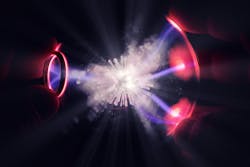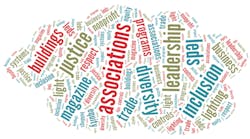The American Lighting Association (ALA), the National Electrical Manufacturers Association (NEMA), and Underwriters Laboratories (UL) have announced the availability of a jointly-produced position paper covering the appropriate use of ultraviolet (UV) technology specifically in the UV-C (100–280 nm) range for disinfection — an application that the COVID-19 pandemic has brought to the forefront. This new paper, as well as the recently-published paper by the International Ultraviolet Association (IUVA) on far UV-C, point out the potential hazard of UV-C to people and other things such as plants, pets, and materials. The messaging clearly points toward appropriate methods of UV-C use, either in containment vessels or in isolation from living beings.
We at LEDs Magazine have warned against inappropriate UV-C deployment concepts since the onset of the pandemic when we began to see questionable products described in press releases. We have covered legitimate UV-C news and even the actions of some of our industries’ largest players such as Signify ramping UV-C lamp production. The way in which such products are deployed will be the key to both safety and efficacy.
The messages from the ALA, NEMA, and UL largely parallel what we have published. The new position paper by the ALA, NEMA, and UL trio is entitled “Ultraviolet-C (UVC) Germicidal Devices: What Consumers Need to Know.”
COVID-19 drives UV-C usage
“We are all extremely concerned about the impacts and elimination of COVID-19 and what can be done to mitigate the spread of the virus,” said Todd Straka, global industry director of UL’s Lighting division. “In this current global situation, the growing interest around sanitation and germicidal properties is putting UV-C devices in greater focus than ever before.”
Still, the potential for misuse is great and the allure is clear. Consider the well-publicized actions people have foolishly taken with products such as hand sanitizer in trying to protect themselves against infection.
“There has been an alarming rise in the availability of consumer-facing ultraviolet germicidal devices that don’t effectively contain UV-C light and carry very serious risks, including permanent eye, skin, and lung damage,” said Straka. “This is a major safety issue that urgently needs to be communicated to consumers and potential users of these devices. By teaming up with ALA and NEMA, who also share these concerns, we are aiming to educate consumers and manufacturers regarding the potential safety risk implications of using UV-C light.”
The position paper carries this specific warning: “Consumers currently have no assurance against the risks of UVC over-exposure from consumer oriented UVC devices that do not provide proper containment of the UVC emissions. When used improperly, these types of devices may present an undue health risk.” The paper is available on the ALA website.
Far UV-C paper
Meanwhile, the IUVA paper on far UV-C came out a few weeks back. The typical germicidal UV-C products emit in the range of 250–280 nm. There has been research suggesting that emission in the 200–225-nm range, referred to sometimes as far UV-C, is not a hazard to human eyes and skin yet still is an effective disinfectant. We have suggested that more research is needed. But the industry is moving on far UV-C. Even Acuity has signed a partnership with Ushio — the primary source for far UV-C lamps.
We welcome the news that the IUVA has strongly recommended that more research be done before deployment of far UV-C in spaces where people are present. The paper is entitled “Far UV-C in the 200–225 nm range, and its potential for disinfection applications.” The ability to use such emissions to deactivate pathogens is clear; the safety of exposure is not.
In the concluding portion of the paper, it states, “Claims of skin and eye safety are supported by early findings in mouse tissues, live mouse models, and 3D human tissue models, and at chronic exposure levels above those required to achieve a disinfection effect. To date, these studies have not extended to the exposure of human individuals and so conclusive evidence on acute and chronic exposure are lacking. Crucially these works should include considerations of risk factors across a broad range of characteristics such as age, gender, race, and medical conditions.” You can access the paper on the IUVA website.
UV-C for consumer products
We do expect that eventually the industry will work out safe ways to apply UV-C. Frankly, it may happen too late to help in the COVID-19 pandemic. UV-C LEDs would in particular be useful but lack the output power needed to meet many of the valid deployment concepts. But perhaps the world will ultimately exit COVID-19 better prepared to limit airborne spread of infections.
“We are pleased to work with NEMA and UL to provide crucial safety information for the public,” says Terry McGowan, FIES, LC, director of engineering and technology for ALA. “The demand for safe, effective UV disinfection technology in residential spaces has led to innovative thinking and is paving the way for the lighting and ceiling fan industries to contribute solutions that will reduce the spread of the disease.”
For up-to-the-minute LED and SSL updates, why not follow us on Twitter? You’ll find curated content and commentary, as well as information on industry events, webcasts, and surveys on our LinkedIn Company Page and our Facebook page.





